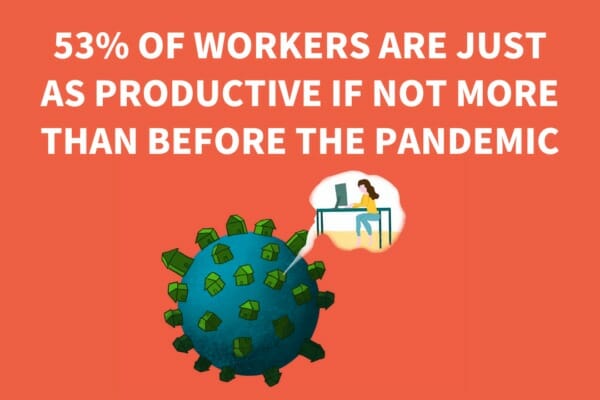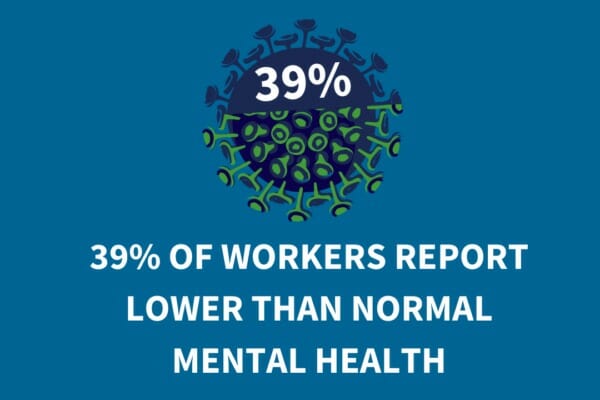Curious about how your telecommuters are doing? Read this.
Wonder what’s going on with your employees who are working from home during the COVID-19 situation? Toluna and Harris Interactive, two leading providers of consumer intelligence, surveyed 568 employees from the United States to assess how they are faring in this new arrangement.
Here are a variety of key findings from that research and what they might signal for employers going forward:
53% of workers are just as productive if not more than before the pandemic
Furthermore, 94 percent say they are just as disciplined if not more than usual working from home, and 98 percent are confident doing their jobs without the direct supervision of a manager.
This information should help assure leaders that employees take their off-site performance seriously and remain committed to doing a good job. For companies that did not allow telecommuting prior to the pandemic, the data suggests reconsideration of policies.
“Businesses have made excuses for years to limit people from working remotely, despite increasing employee calls for flexibility,” says Vijay Mistry, Head of Employee Experience Research for Harris Interactive and Toluna. “Excuses of impossibility and decreased output will simply no longer hold up. Employees are not only comfortable working remotely, but have demonstrated they can be more disciplined and self-sufficient at home. As a result, increased flexibility will be an inevitable expectation that employers will have to manage when work-life starts to return to normal.”
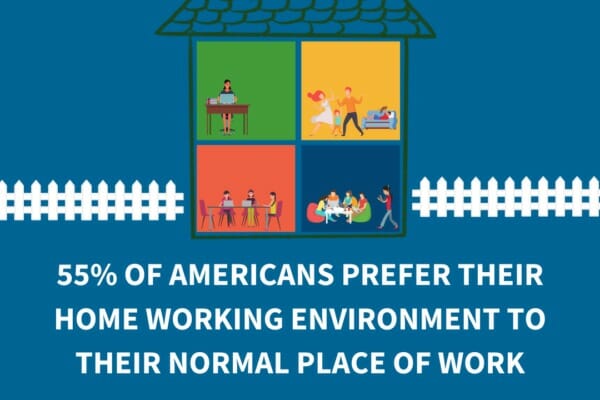
Over half (55%) of Americans prefer their home working environment to their normal place of work
While certainly nobody wanted a global pandemic forcing people to telecommute, many employees are quite fine with setting up shop at home. Much of the allure comes from greater control over conditions, such as dressing however you wish, setting temperature to personal liking, designing a work area that fits your style, and having Fido at your feet. Others find getting away from office politics and colleague disruptions appealing and conducive to productivity. And with the average one-way commute to work at just over 27 minutes, telecommuting Americans love recapturing nearly an hour of time daily.
Managers should note that 65 percent of Americans in the survey say they are satisfied in their work, up from 61 percent in early April. As worker satisfaction plays a huge role in engagement and retention, employers may want to explore remote work options beyond this period of necessity as a strategy for developing happier staff members.
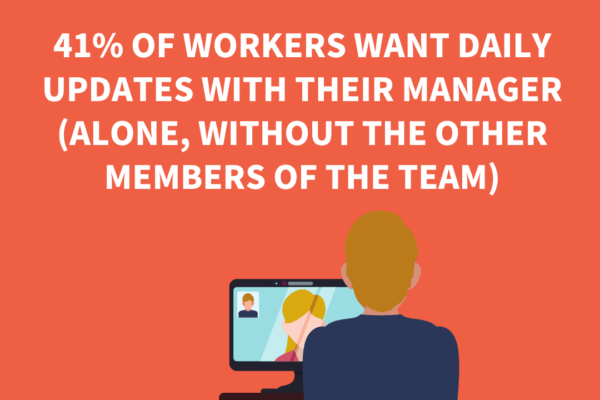
41% of workers want daily updates with their manager (alone, without the other members of the team)
Lest supervisors wonder if all this talk about home-based work spells employees eager to be left alone to do their own thing, don’t worry. While nobody likes a micromanager, workers desire consistent guidance and feedback. Especially in these unusual times, such information reassures them that they are meeting standards and doing things “right.” With nearly half of respondents looking for one-on-one communication each day, your input remains a valuable contributor to their success.
Similarly, 53 percent report wanting regular team meetings, and 42 percent desire regular updates on the company’s situation. Keep those Zoom gatherings coming!
39% of workers report lower than normal mental health
Let workers know that they are not alone during these uncertain times. With 64 percent of respondents in the survey reporting anxiety about the pandemic, now is the time to make people aware of your company’s Employee Assistance Program (EAP). Remind them that this free, voluntary resource provides evaluations, short-term counseling, and referrals to appropriate professionals and support groups.
Realize, too, that anxiety likely will still be an issue when on-site work resumes. In addition to continued trepidation about the general state of the world, employees may experience uneasiness upon emerging from the safety of home. Take their concerns seriously by informing of actions the organization has implemented to promote a healthy workplace, and ask for their suggestions.
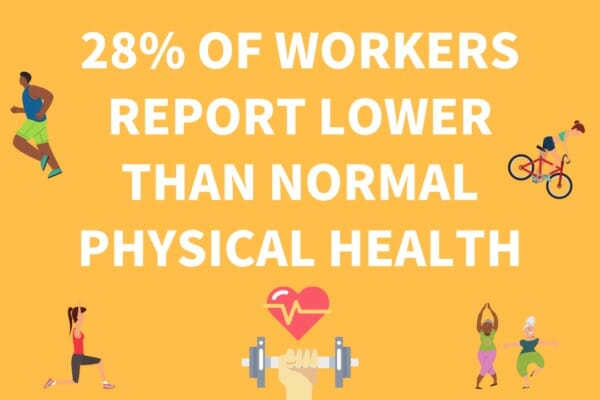
28% of workers report lower than normal physical health
Lastly, note that weight gain during the pandemic is becoming so common that it even has its own term – “The COVID-15,” a play off of the familiar “Freshman 15” that refers to the extra pounds college students often put on during their first year. Emotional eating, boredom during social distancing, snacking while binge-watching television, and closed gyms all contribute to the problem for stay-at-home workers. Adding to the unhealthiness — 42 percent of respondents say they are drinking more alcohol, and 32 percent report smoking more.
The hope would be that unhealthy habits dwindle when life goes back to a more “normal” state. Better health means fewer sick days taken and reduced risk for costly chronic conditions.
Employers may want to consider initiatives to promote well-being, such as support for weight loss and smoking cessation. And while everyone may be eager to resume social activities, finding an alternative to Bagel Monday can be a great start!

